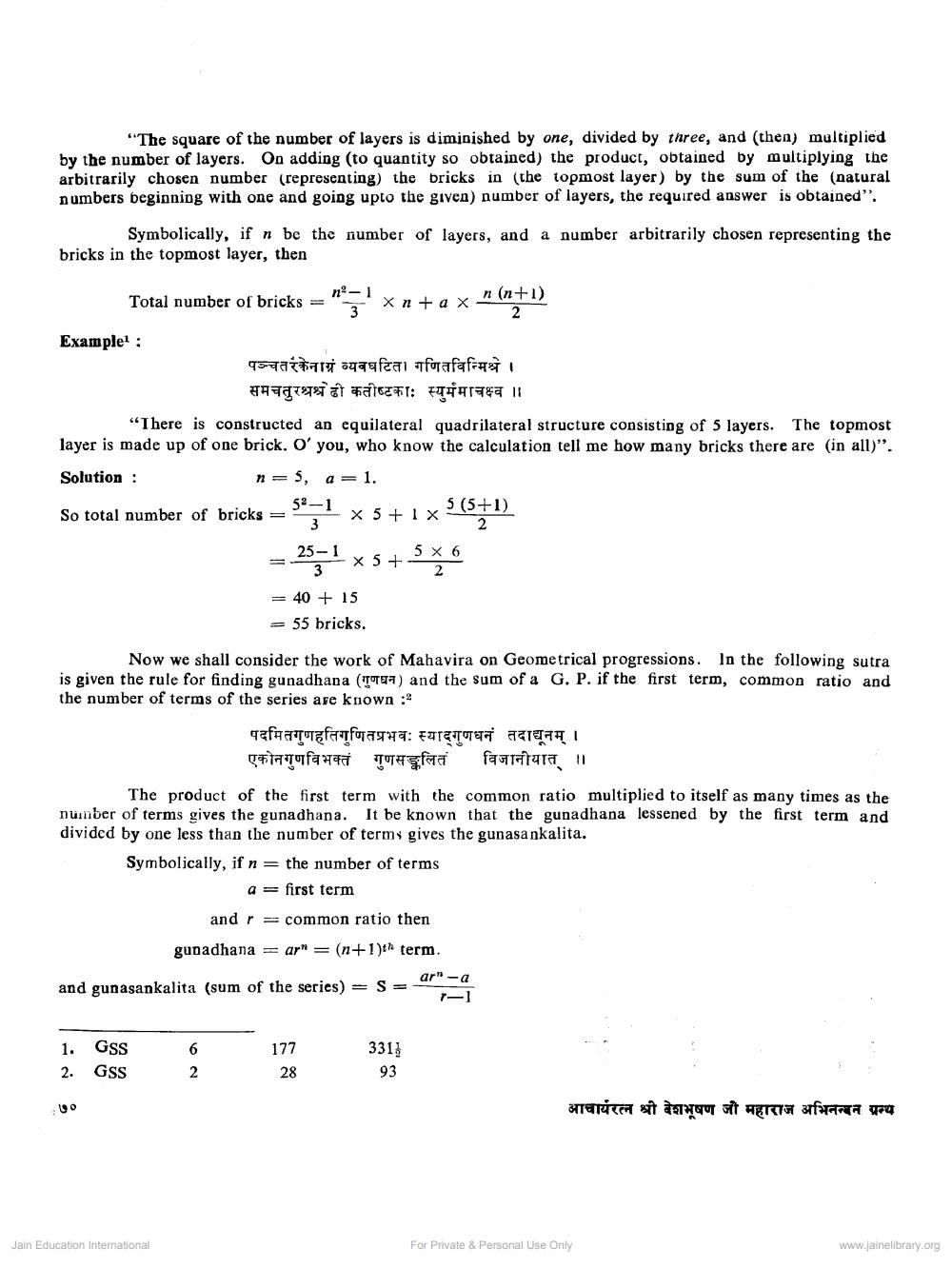________________
"The square of the number of layers is diminished by one, divided by three, and (then) multiplied by the number of layers. On adding (to quantity so obtained) the product, obtained by multiplying the arbitrarily chosen number (representing) the bricks in (the topmost layer) by the sum of the natural numbers beginning with one and going upto the given) number of layers, the required answer is obtained".
Symbolically, if n be the number of layers, and a number arbitrarily chosen representing the bricks in the topmost layer, then
no-1
Total number of bricks
Xn+ ay n (n+1)
Example! :
पञ्चतरकेनाग्रं व्यवघटित। गणितविन्मिश्रे ।
समचतुरश्रश्रेढी कतीष्टकाः स्युर्ममाचक्ष्व ।। “There is constructed an equilateral quadrilateral structure consisting of 5 layers. The topmost layer is made up of one brick. O' you, who know the calculation tell me how many bricks there are in all)". Solution :
n=5, a=1.
So total number of bricks = x 5+1x5(571).
= 25;? x 5 + 5 xo
= 40 + 15 = 55 bricks.
Now we shall consider the work of Mahavira on Geometrical progressions. In the following sutra is given the rule for finding gunadhana (TT) and the sum of a G. P. if the first term, common ratio and the number of terms of the series are known :
पदमितगुणहतिगुणितप्रभवः स्याद्गुणधनं तदाधूनम् ।
एकोनगुणविभक्तं गुणसङ्कलित विजानीयात् ।। The product of the first term with the common ratio multiplied to itself as many times as the number of terms gives the gunadhana. It be known that the gunadhana lessened by the first term and divided by one less than the number of terms gives the gunasankalita. Symbolically, if n= the number of terms
a= first term and r = common ratio then gunadhana = ar” = (n+1)t term.
and gunasankalita (sum of the series) = S=4
ar" -a
1. GSS 2. GSS
3313 93
2
28
आचार्यरत्न श्री वेशभूषण जी महाराज अभिनन्दन ग्रन्थ
Jain Education International
For Private & Personal Use Only
www.jainelibrary.org




